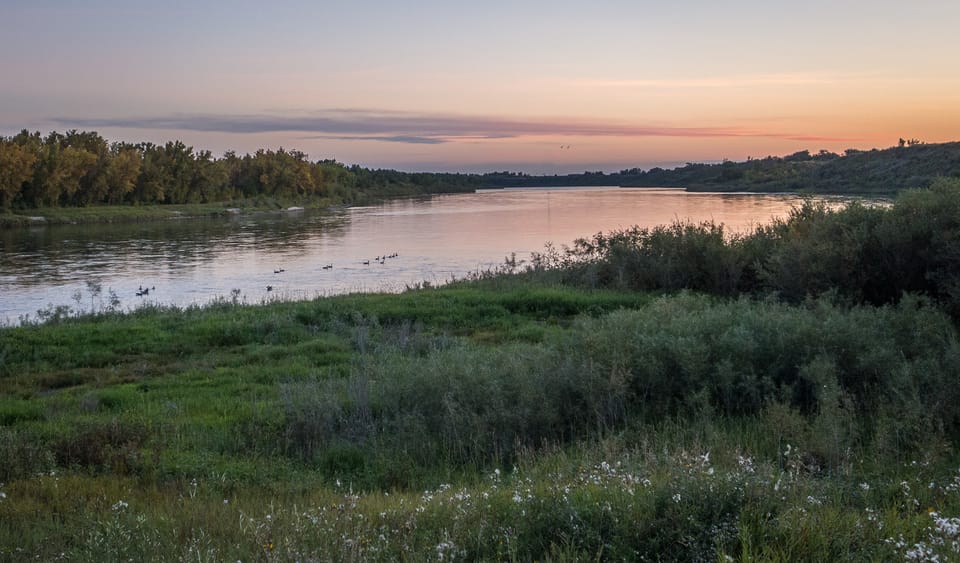EcoWest News, June 13, 2023

Welcome to EcoWest News, a weekly round-up of news and resources that you can put to use in addressing environmental issues and protecting the wild in your community.
“We who are waist-deep in that [climate justice] movement need more than facts to win. We need stories. And not just stories about the stakes, which we know are high, but stories about the places we call home. Stories about our own small corners of the Earth as we know them. As we love them.” [Yes]
Across the West
Some Langley, B.C. residents and environmental organizations are pushing back against a proposed expansion of an industrial development into a protected wetland area. [CBC]
Boreal peatlands can play a crucial role in buffering wildfires through moisture retention, vegetation with a high water content, lack of fuel continuity, and isolation of fires. [Ducks Unlimited]
The University of Saskatchewan is collaborating with remote Indigenous communities to accelerate renewable energy initiatives and build a pathway to net-zero. [USask]
Point Douglas neighbourhood has Winnipeg’s highest percentage of children. They live alongside train tracks and scrapyards on contaminated soil and in polluted air. [The Narwhal]
Have Your Say
Manitoba residents are encouraged to show their support for protecting Pemmican Island in Lake Winnipegosis by completing a short government survey before June 25. [CPAWS MB]
Lethbridge residents have until June 26 to comment on the City’s climate adaptation and action plan. [CBC]
Around the World
We have “technologies to enable us to process and reuse water over and over, at the scale of a city, a campus, and even an individual home.” It’s already happening in San Francisco. [Yale Environment 360]
Google Earth is revolutionizing the way we monitor deforestation: “Seeing the scale of destruction, seeing where deforestation is happening, gives you insights into what’s causing it, which areas are more threatened and need more protection” [The Verge]
Air quality monitors “could be an absolute gamechanger for tracking and monitoring biodiversity” as they also vacuum up eDNA. [Anthropocene]
An elevated road section is more effective than a tunnel in allowing small mammals and amphibians to cross roads. [Frontiers in Ecology and Evolution]
A small French business is saving construction waste from landfill by turning it into stylish tables, shelves, and chairs. [EuroNews Green]
DIY
Big events, such as weddings, funerals, and birthdays, can be a way of sharing how much we care about the environment. [Grist]
Green Communities Canada has created a web page to provide homeowners with the information and tools they need to accelerate home energy retrofits that will reduce emissions, lower heating costs, and increase comfort. [Deep Energy Retrofits]
Over 300 million pairs of athletic shoes are sold every year, and each pair of running shoes produces the equivalent of 14 kg of CO2. Here’s how brands and customers can reduce their impact on the environment. [Trail Runner]
5 water-saving tips for your garden. [Wicked Leeks]
A Kingston, Ontario program that teaches high schoolers how to ride the bus has increased youth ridership from 28,000 to 600,000 in 4 years. [The Energy Mix]
“Promoting refillable bottles, bulk dispensers, deposit-return-schemes and packaging take-back schemes could help to cut plastic pollution by 30 per cent” Replacing plastic packaging with alternative materials could deliver an additional 17% drop. [EuroNews Green]
Nature’s Wonders
City birds — adaptable, prolific and smart — deserve our respect. They point the way to making our cities more hospitable for a broader suite of birds. [The Revelator]
Mushrooms sweat to stay cool, but why do they need to stay cooler than their environment? Could it be to create optimal conditions for spore formation or to stay humid? We just don’t know. [Live Science]
Two new video games are putting “ugly” animals in the limelight. [EuroNews Green]
Photo credit: https://www.flickr.com/photos/apmckinlay/14997987469
EcoFriendly West informs and encourages initiatives that support Western Canada’s natural environment through its online publication and the Nature Companion website/app. Like us on Facebook, follow us on Twitter or Mastodon, or subscribe by email.

Member discussion